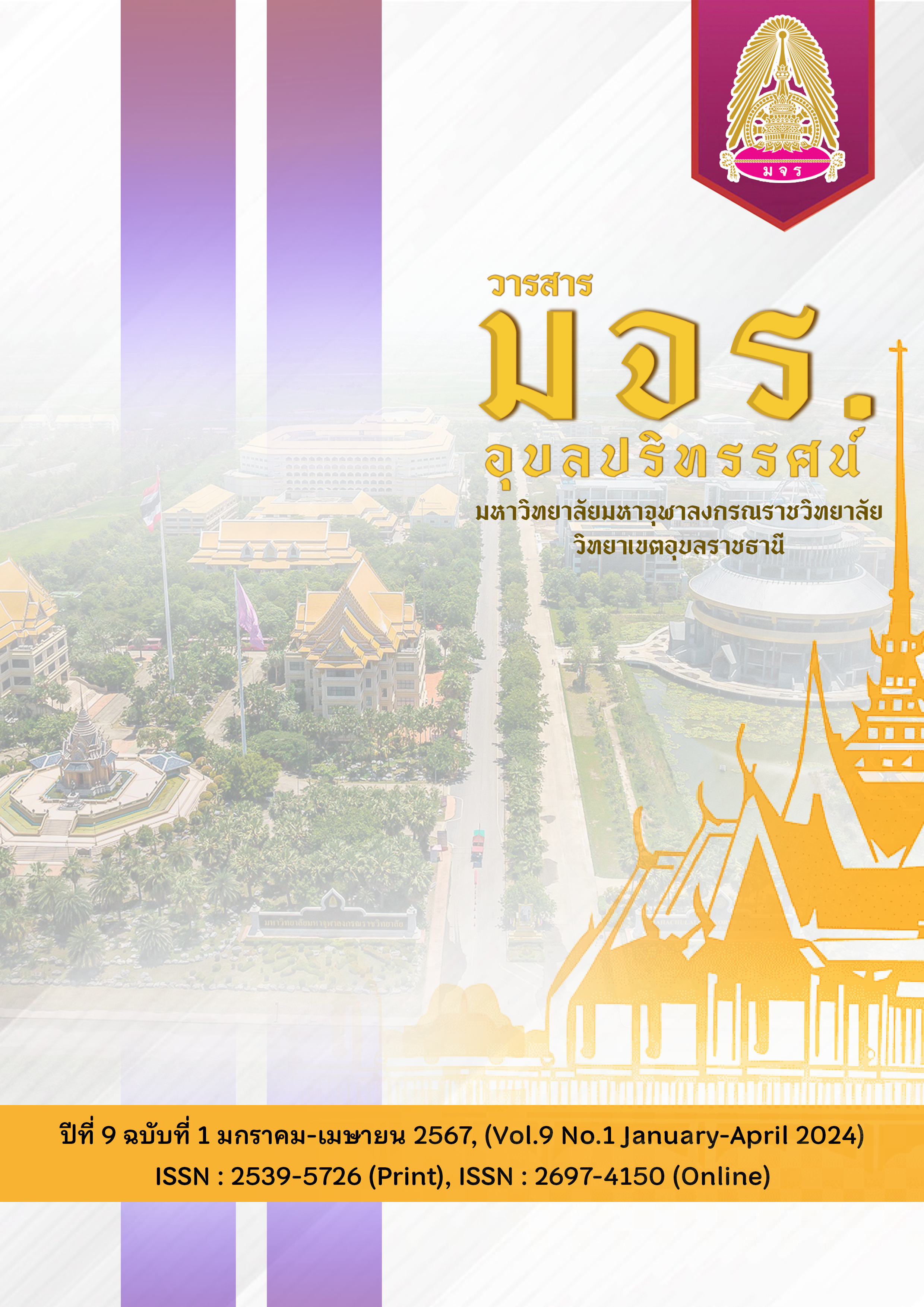COMPARISON OF SATISFACTION ON CLASSROOM CHARTS ORGANIZATION OF PHYSICAL EDUCATION BETWEEN PRIMARY-TO-SECONDARY-LEVEL STUDENT, NETWORK SCHOOL OF THE DEMONSTRATION SCHOOL OF RAMKHAMHAENG UNIVERSITY
Main Article Content
Abstract
This research aimed to study and compare the satisfaction on classroom charts organization of physical education between primary-to-secondary level students, network school of the demonstration school of Ramkhamhaeng University. Participants were 346 primary–to-secondary level students, network school of the Demonstration School of Ramkhamhaeng University. Research tools were 1) the Classroom Organization Charts, and 2) the Satisfaction of Classroom Organization Charts Questionnaire, which researcher constructed and were qualified with three specialists for face validity and reliability (r = 0.90). General Data were analyzed with frequency, percentage, mean, and standard deviation, as well as comparison of satisfaction of classroom organization chart for physical education between education levels were analyzed with Paired t-test, with statistical significance level at 0.05.
Results are that;
- Study of satisfaction on classroom charts organization for physical education found that students had satisfaction sorting as follows; 1) Deep row (M = 3.30, SD. = 1.37), 2) Line formation (M = 3.27, SD. = 1.25), 3) U-shape (M = 3.16, SD. = 1.48), 4) Circle –shape (M = 3.11, SD. = 1.44), 5) Looking down (M = 1.30, SD. = 1.55), and 6) Looking high (M = 0.88, SD. = 1.09).
- Comparison of satisfaction on classroom organization charts for physical education classified on charts had statistically significant difference at 0.05 level.
Article Details
References
กระทรวงการท่องเที่ยวและกีฬา. (2566). แผนพัฒนากีฬาแห่งชาติ (ร่าง) ฉบับที่ 7 (พ.ศ.2566 – 2570). [ออนไลน์] วันที่สืบค้น 1 สิงหาคม 2566 สืบค้นจาก: https://www.dpe.go.th/strategic-preview-451191791792.
โครงการโรงเรียนรักษาศีล 5. (2563). ห้องเรียนแห่งการเรียนรู้. [ออนไลน์] วันที่สืบค้น 1 สิงหาคม 2566 สืบค้นจาก: https://www.sila5.com/blog/blog/detail/var/44s2e4
บุญชม ศรีสะอาด. (2553). การวิจัยเบื้องต้น. พิมพ์ครั้งที่ 8. กรุงเทพฯ : สุวีริยาสาส์น.
บุญสม มาร์ติน. (2508). ปรัชญาพลศึกษา อ้างถึงใน พงษ์ศักดิ์ พละพงศ์. (2527). ประวัติ- ปรัชญาและหลักการพลศึกษา. พิมพ์ครั้งที่ 5. กรุงเทพฯ : โอเดียนสโตร์.
สุทธิชัย หมั่นเขตรกิจ. (2560). การศึกษาสภาพปัญหาการบริหารจัดการห้องปฏิบัติการคอมพิวเตอร์ของสถานศึกษา สังกัดสำนักงานเขตพื้นที่การศึกษาประถมศึกษาอุทัยธานี เขต 1. ปริญญาการศึกษามหาบัณฑิต สาขาวิชาเทคโนโลยีและสื่อสารการศึกษา มหาวิทยาลัยนเรศวร. [ออนไลน์] วันที่สืบค้น 1 สิงหาคม 2566 สืบค้นจาก: file:///C:/Users/seenam/Downloads/AC45AB451CAC4168378CF924 BE0E523D7AFE7686_1.%20%วิจัยการจัดห้องคอม.pdf.
สำนักงานสภาพัฒนาการเศรษฐกิจและสังคมแห่งชาติ. (2566). แผนพัฒนาพัฒนาเศรษฐกิจและสังคมแห่งชาติ ฉบับที่ 13 (พ.ศ.2566– 2570). [ออนไลน์] วันที่สืบค้น 1 สิงหาคม 2566 สืบค้นจาก: https://www.nesdc.go.th/.
อนุกูล นิยมถิ่น. (2557). การจัดกิจกรรมการเรียนรู้ว่ายน้ำโดยใช้รูปแบบการสอนพลศึกษา 5 ขั้นและรูปแบบการสอนสมองเป็นฐานที่มีผลต่อทักษะการสร้าง ความคุ้นเคยกับน้ำ ท่าปลาดาว ของนักเรียนชั้นประถมศึกษาปีที่ 2. วารสารวิจัย มข. มส. (บศ.) 2 (3) : ก.ย. - ธ.ค. 2557
อรทัย วงค์คำ. (2563). กระบวนการจัดการเรียนการสอนของพลศึกษา. [ออนไลน์] วันที่สืบค้น 1 สิงหาคม 2566 สืบค้นจาก: https://sites.google.com/site/orathaieducation /hlaksutr-phlsuksa/krabwnkar-cadkarreiyn-kar-sxn-khxng-phlsuksa
Bruner, J. (1960). The process of education. Cambridge, MA: Harvard University Press.
Bloom, B. S. (1964). Taxonomy of Education Objectives, Handbook 1: Cognitive
Domain.New York: David Mackey.
Erikson, E. (1950). Psycho Theory of Personality. Childhood and society (1st ed.)
New York: Norton.
Havighurst, R. J. (1972). Developmental tasks and education (3rd edition). New York:
Mckay.
Hebb, D. (1949). The Organization of Behavior: A Neuropsychological Theory.
Krejcie,R. V.,& Morgan, D. W. (1970). “Determining Sample Size for Research
Activities”, Educational and Psychological Measurement, 30(3), 607-610.
Hunt, J. M. (1961). Intelligence and experience. New York: Ronald Press.

